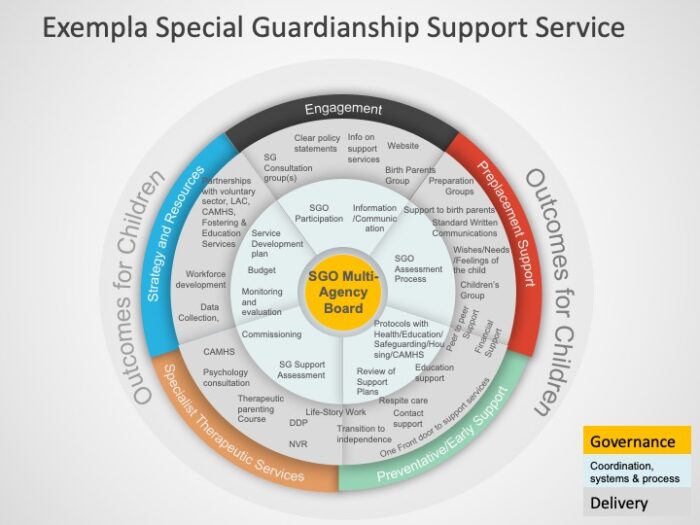
Information, advice and support for professionals working with kinship carers.
For professionals:
Read this guide, which aims to support the development of responsive and effective support services for children leaving care under a special guardianship order (SGO).
Please visit Support and advice for kinship carers

Click on the link below to take you to the section you'd like to read:
Supporting formerly looked after children in special guardianship order (SGO) placements is a growing aspect of the work of local authorities and it is clear that such orders will be the subject of close attention in the near future (Public Law Working Group 2020). There is increasing evidence and realisation of the unmet need of these children and their families, just as there was for adopted children over the last decade. This has been compounded by the use of the order in ways which were not foreseen when the order was implemented.
“The expectation that special guardians would need little if any support derived from a philosophy of caution in relation to its use. In these areas, the approach was considered to be more in line with the original expectations for Special Guardianship – that it would be primarily used for older children, living within a very settled family environment and where (for most) the transition to a new legal order represented a juridical change that would free the family from local authority involvement and normalise already existing family relationships.” (Wade et al 2014 p49)
Although children with an SGO have received much less attention, as this document illustrates, their situation and needs are often more complex and challenging than those of adoptive families, whilst SGO and kinship carers are almost always less prepared and often more poorly resourced for their responsibilities. The challenge to develop appropriate support services is therefore just as, if not more, challenging.
The Adoption and Special Guardianship Leadership Board (ASGLB) has commissioned this work as part of its ‘Modernising Permanence Programme’ with the aim of supporting the development of responsive and effective support services for children leaving care under an SGO. This ‘blueprint’ for Special Guardian (SG) Support Services is effectively a generalised service specification based on a review of some ‘exempla’ services[1] currently available in England, together with the expressed needs and lived experience of SG families themselves.
The project aims to fulfil the wish of Wade and colleagues expressed in 2014.
“There is a need to identify LAs that are successful in promoting and using SG (Special Guardianship) across different social groups and that are developing promising models of practice and disseminate these examples as widely as possible. Pockets of good practice did exist and need to be more widely known.” (Wade et al. 2014 p246)
The scope of this project is confined to those children who leave care under an SGO in line with the ASGLB’s responsibilities. However, it is also informed by good practice that has a more generic reach and should inform wider developments in kinship care more generally.
The target audience for this document therefore includes:
The following is a summary of the key elements of an exempla special guardianship support service together with a tool which can be used to audit these components and develop an action plan to improve services. You can also access a brief summary document for an overview of the content.
We’ve created this infographic to demonstrate the different elements of a special guardianship support service.

Browse the contents of this guide to see the 20 key elements that have been identified for service providers to benchmark their existing services.
Sign up for emails to keep up to date with the information that’s important to you, from support and advice for kinship carers, to our latest news, events and campaigns.